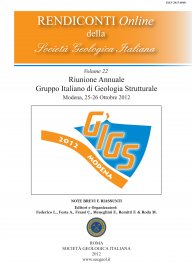
Caratterizzazione strutturale e petrofisica della sezione vulcanica sommitale di una crosta oceanica intatta
Emanuele Fontana (*) & Paola Tartarotti (*)
(*) Dipartimento di Scienze della Terra "A. Desio", Univesrità degli Studi di Milano, via Mangiagalli 34, 20133 Milano.
Volume: 22/2012
Pages: 93-96
Abstract
Structural and petrophysical characterization of the upper volcanic section of an intact oceanic crust.
Specific studies on mechanics of fracturing in volcanic rocks are generally related to subareal environment. Such studies generally attribute the generation of vertical (Column-Bounding) and horizontal (Column-Normal) fractures to the thermal contraction of rocks and hence to their cooling history. Difficulties in operating at deep seafloor make similar studies on subaqueous lavas less common. The best way to analyze the structure of the oceanic crust in present-day oceans is to drill and core it. Integrating distinct analysis approaches, such as core and log measurements is crucial to improve the understanding of the subseafloor geological environment. This formulation may provide a more complete information and refine both thoroughness of data achieved directly on cores, and comprehension of values achieved indirectly from geophysical measurements. In this study, we present an analysis of direct (structural and petrophysical) data from drilled cores, integrated with in situ indirect (geophysical downhole logging) data to perform a structural and petrophysical characterization of the upper oceanic crust at ODP/IODP Site 1256. We operated for the first time an innovative technique for depth shifting and reorienting of individual core pieces recovered by drilling, to match direct and indirect data. Such analyses allow us to infer the evolution of the cooling history of a shallow portion of the lava section from superfast-spreading crust. Using only unidimensional data, deriving from ocean drilling, we are able to show a qualitative solidification rate scheme, obtaining a structural zonation, and indicate the flowing direction of the studied lava portion.
Keywords
Get Full Text